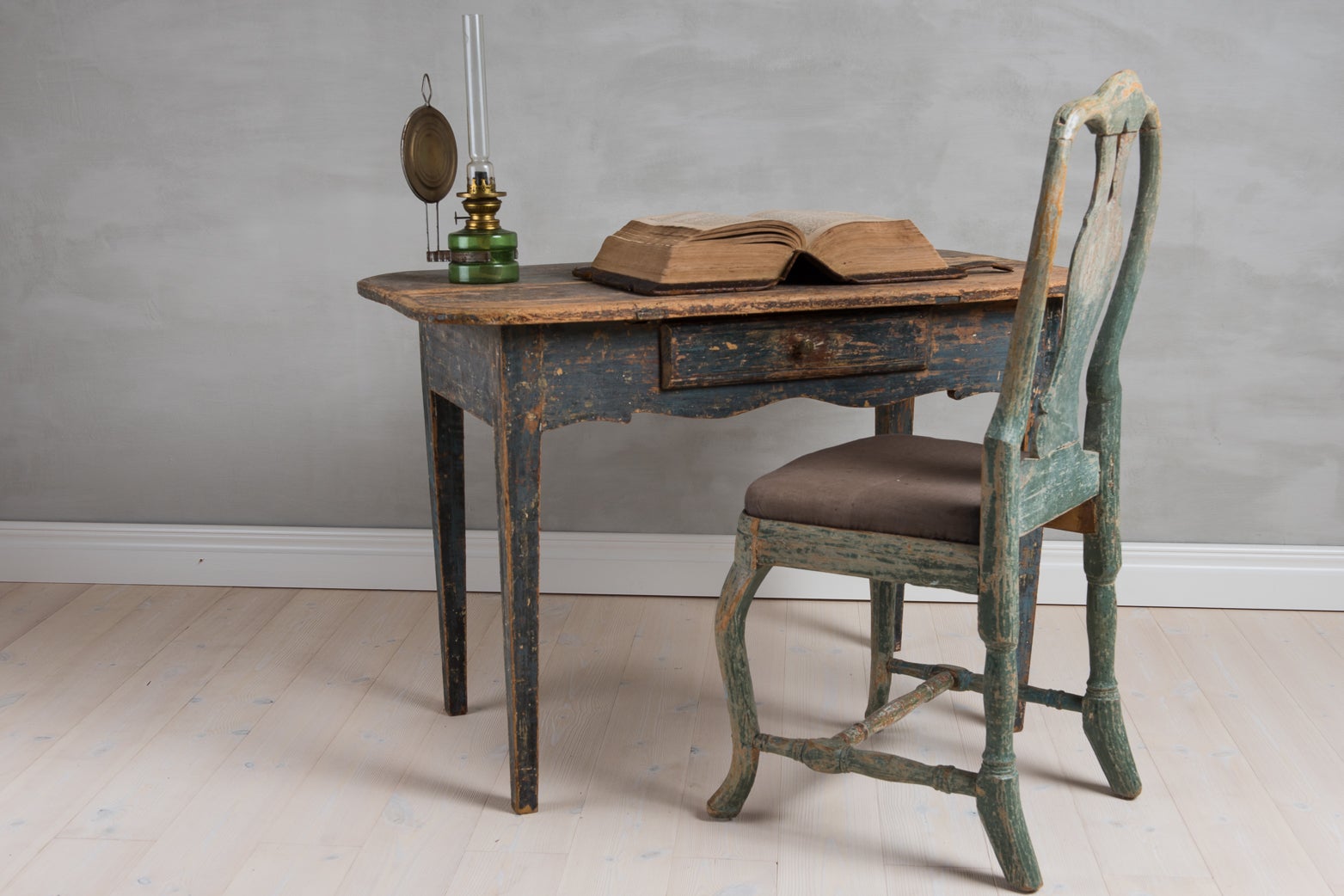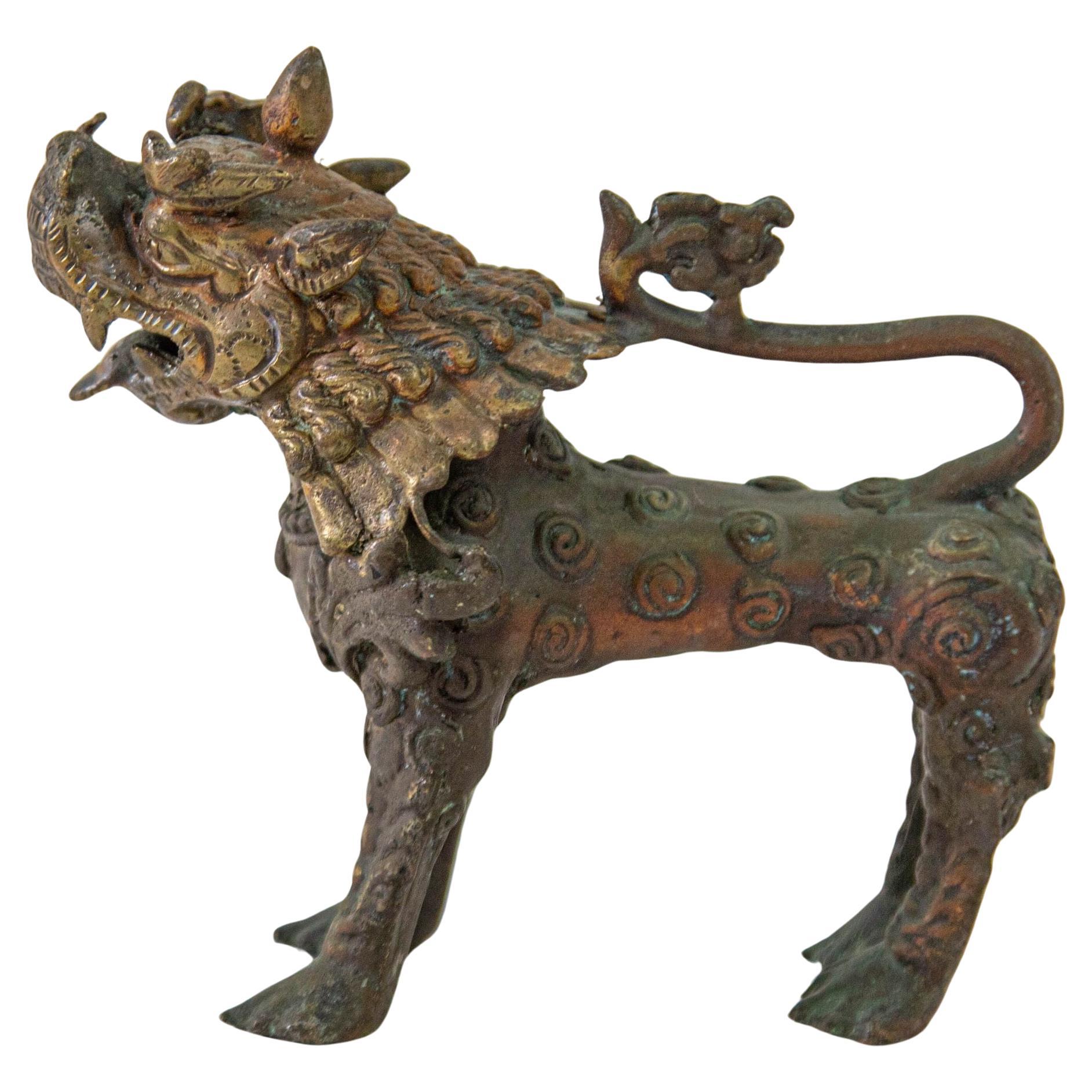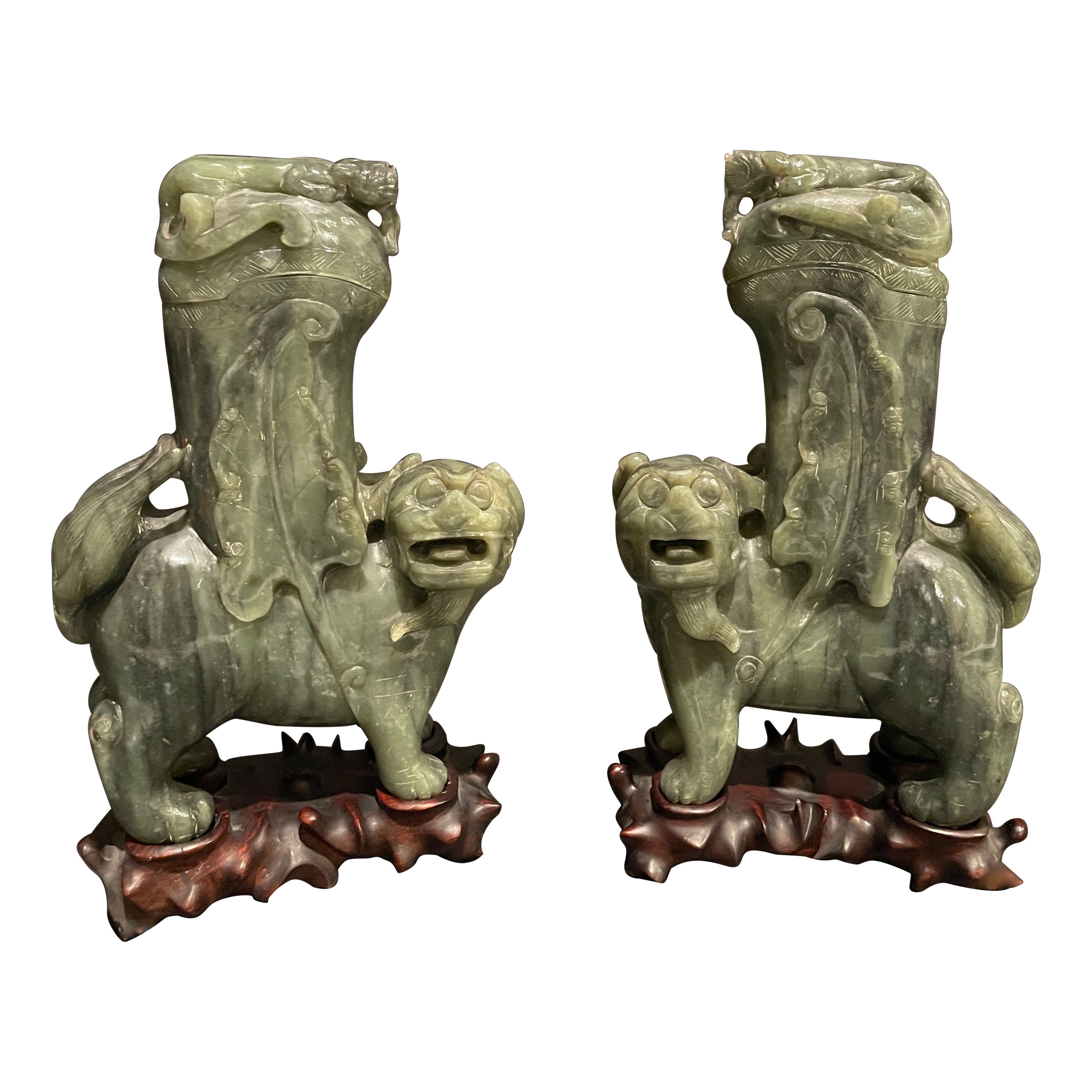Items Similar to 19th Century Chinese Guardian Lions in Original Condition
Want more images or videos?
Request additional images or videos from the seller
1 of 6
19th Century Chinese Guardian Lions in Original Condition
About the Item
Chinese guardian lions in original condition. The lions are made from wood and were handmade sometime during the 19th century in China. The guardian lions are sometimes referred to as foo dogs or lion dogs and are thought to ward off evil sprits and ill intentions. They have a long history in China and other East Asian countries. They are always kept in pairs with one female and one male.
- Dimensions:Height: 5.91 in (15 cm)Width: 11.82 in (30 cm)Depth: 3.94 in (10 cm)
- Sold As:Set of 2
- Style:Chinese Export (Of the Period)
- Materials and Techniques:
- Place of Origin:
- Period:
- Date of Manufacture:19th Century
- Condition:Wear consistent with age and use.
- Seller Location:Kramfors, SE
- Reference Number:

About the Seller
5.0
Platinum Seller
These expertly vetted sellers are 1stDibs' most experienced sellers and are rated highest by our customers.
Established in 1970
1stDibs seller since 2016
423 sales on 1stDibs
Typical response time: 6 hours
- ShippingRetrieving quote...Ships From: Kramfors, Sweden
- Return PolicyA return for this item may be initiated within 3 days of delivery.
More From This SellerView All
- 19th Century Original Swedish Blue Pine BoxLocated in Kramfors, SENorthern Swedish blue pine box from Hälsingland in northern Sweden. The box is from the 19th century and likely from the village Norrala. The box was likely a friargåva, a gift given...Category
Antique Mid-19th Century Swedish Country Decorative Boxes
MaterialsPine
- Large 19th Century Original Swedish Painted Hope ChestLocated in Kramfors, SEBlack Swedish hope chest from the first years of the 19th century. This chest is in original, untouched condition with the original paint. The lid of the chest is painted very decora...Category
Antique Early 19th Century Swedish Folk Art Blanket Chests
MaterialsPine
- 19th Century Swedish Original Faux Paint Demi Lune TableLocated in Kramfors, SENorthern Swedish console or demi lune table in a slightly unusual model where each half has four legs. Made in pine with the original faux paint. The table top is highly decorative w...Category
Antique Mid-19th Century Swedish Country Demi-lune Tables
MaterialsPine
- Late 19th Century Swedish Stump Chair in Solid PineLocated in Kramfors, SESwedish stump chair manufactured from a hollowed tree trunk. The chair is primitive and has never been painted. The two bands going around the seat...Category
Antique Late 19th Century Swedish Folk Art Chairs
MaterialsPine
- 19th Century Swedish Provincial Gustavian TableLocated in Kramfors, SE19th century provincial Gustavian table from northern Sweden. The table has straight tapered legs decorated with cannelures. It is in untouched original condition with original untou...Category
Antique Early 19th Century Swedish Gustavian Side Tables
MaterialsPine
- Early 19th Century Swedish Country SideboardLocated in Kramfors, SECountry house sideboard with a curved front from northern Sweden. The sideboard is from the 1820 to 1830s and is made in painted pine. It has two doors and rounded corners as well as...Category
Antique Early 19th Century Swedish Country Sideboards
MaterialsPine
You May Also Like
- A pair of 19th Century carved Foo temple dogs or Chinese guardian LionsLocated in London, GBChinese guardian lions, or imperial guardian lions, are a traditional Chinese architectural ornament. Typically made of stone, they are also known as stone lions or shishi (石獅; shíshī). They are known in colloquial English as lion dogs or foo dogs / fu dogs. The concept, which originated and became popular in Chinese Buddhism, features a pair of highly stylized lions—often one male with a ball and one female with a cub—which were thought to protect the building from harmful spiritual influences and harmful people that might be a threat. Used in imperial Chinese palaces and tombs, the lions subsequently spread to other parts of Asia including Japan (see komainu), Korea, Philippines, Tibet, Thailand, Myanmar, Vietnam, Sri Lanka, Nepal, Cambodia, Laos, and Malaysia. There has been extensive interaction between Chinese mythology and Confucianism, Taoism, and Buddhism. Elements of pre-Han dynasty mythology such as those in Classic of Mountains and Seas were adapted into these belief systems as they developed (in the case of Taoism), or were assimilated into Chinese culture (in the case of Buddhism). Elements from the teachings and beliefs of these systems became incorporated into Chinese mythology. For example, the Taoist belief of a spiritual Paradise became incorporated into mythology as the place where immortals and deities used to dwell. Sometimes mythological and religious ideas have become widespread across China's many regions and diverse ethnic societies. In other cases, beliefs are more limited to certain social groups, for example, the veneration of white stones by the Qiang. One mythological theme that has a long history and many variations involves a shamanic world view, for example in the cases of Mongolian shamanism among the Mongols, Hmong shamanism among the Miao people, and the shamanic beliefs of the Qing dynasty from 1643 to 1912, derived from the Manchus. Politically, mythology was often used to legitimize the dynasties of China, with the founding house of a dynasty claiming a divine descent. Mythology and philosophy. Further information: Chinese philosophy True mythology is distinguished from philosophical treatises and theories. Elaborations on the Wu Xing are not really part of mythology, although belief in five elements could appear. The Hundred Schools of Thought is a phrase suggesting the diversity of philosophical thought that developed during the Warring States of China. Then, and subsequently, philosophical movements had a complicated relationship with mythology. However, as far as they influence or are influenced by mythology, divides the philosophical camps into two rough halves, a Liberal group and a Conservative group. The liberal group being associated with the idea of individuality and change, for example as seen in the mythology of divination in China, such as the mythology of the dragon horse that delivered the eight bagua diagrams to Fu Xi, and methods of individual empowerment as seen in the Yi Jing (Book of Changes). The Liberal tendency is towards individual freedom, Daoism, and Nature. The relationship of the Conservative philosophies to mythology is seen in the legendary Nine Tripod Cauldrons, mythology about the emperors and central bureaucratic governance, Confucianism, written histories, ceremonial observances, subordination of the individual to the social groups of family and state, and a fixation on stability and enduring institutions. The distinction between the Liberal and Conservative is very general, but important in Chinese thought. Contradictions can be found in the details, however these are often traditional, such as the embrace by Confucius of the philosophical aspects of the Yi Jing, and the back-and-forth about the Mandate of Heaven wherein one dynasty ends and another begins based according to accounts (some of heavily mythological) where the Way of Heaven results in change, but then a new ethical stable dynasty becomes established. Examples of this include the stories of Yi Yin, Tang of Shang and Jie of Xia or the similar fantastic stories around Duke of Zhou and King Zhou of Shang. Mythology exists in relationship with other aspects of society and culture, such as ritual. Various rituals are explained by mythology. For example, the ritual burning of mortuary banknotes (Hell Money), lighting fireworks, and so on. A good example of the relationship of Chinese mythology and ritual is the Yubu, also known as the Steps or Paces of Yu. During the course of his activities in controlling the Great Flood, Yu was supposed to have so fatigued himself that he lost all the hair from his legs and developed a serious limp. Daoist practitioners sometimes incorporate a curiously choreographed pedal locomotion into various rituals. Mythology and practice, one explains the other: in these rituals, the sacred time of Yu merges with the sacral practice of the present. Various ideas about the nature of the earth, the universe, and their relationship to each other have historically existed as either a background or a focus of mythologies. One typical view is of a square earth separated from a round sky by sky pillars (mountains, trees, or undefined). Above the sky is the realm of Heaven, often viewed of as a vast area, with many inhabitants. Often the heavenly inhabitants are thought to be of an "as above so below" nature, their lives and social arrangements being parallel to those on earth, with a hierarchical government run by a supreme emperor, many palaces and lesser dwellings, a vast bureaucracy of many functions, clerks, guards, and servants. Below was a vast under ground land, also known as Diyu, Yellow Springs, Hell, and other terms. As time progressed, the idea of an underground land in which the souls of the departed were punished for their misdeeds during life became explicit, related to developments in Daoism and Buddhism. The underground world also came to be conceived of as inhabited by a vast bureaucracy, with kings, judges, torturers, conductors of souls, minor bureaucrats, recording secretaries, similar to the structure of society in the Middle Kingdom (earthly China). Chinese temple Dogs...Category
Antique 1860s Chinese Chinese Export Sculptures and Carvings
MaterialsHardwood
- Asian Bronze Guardian Lion Sculpture, Nepal, 19th centuryLocated in North Hollywood, CAAntique Asian bronze guardian lion Lion Sculpture, Nepal 19th Century. A bronze figure with traces of polychromy depicting a temple guardian lion with an open mouth, long mane and a defensive posture on its four outstretched legs. The tail is curled over the back and the body is full of curls in the form of protuberances and decorative spirals. Antique bronze Nepalese temple guardian style lion sculpture, richly ornamented and masterfully sculpted with patinated gilt brass, the ferocious mythical beast in an aggressive ready to charge stance. Measures: 5.5: W x 4.75 H x 3 D Inches Antique condition with typical wear and appropriate patina. From the Art collection of Marian and John Scott. Acquisition date: 1981. Evaluation date records: 1982. Purchased from the amazing private collection of Mark Lissauer who spent his life collecting niche ethnographic pieces. About Mark Lissauer: Mark Lissauer spent forty years travelling abroad for months at a time collecting ethnographic artefacts primarily from New Guinea and the islands of the West Pacific, and from Asia and Himalayan countries. Fluent in five languages and having in the course of business travelled to more than forty countries, Mark is well-known to museums and art-collectors around the world for his long career and his interesting and diverse collection of rare ethnographic material. Mark knows the origin and symbolism of each piece. Through extensive research and more than ninety trips around the globe, Mark familiarised himself with the traditions of the various cultures he visited in order to understand the meaning of each object to its region and tribe. His home has a specialist library and several rooms are filled with tribal carvings, textiles and ethnographica. He acquired his first tribal piece in 1948 during a business trip to Milne Bay, New Guinea, and has since documented the acquisition of some 35,000 items. Several thousands of these have been sold to important private collections and museums worldwide, including the Rockefeller Museum, the British Museum and the Musée National des Arts d’Afrique et d’Océanie, now incorporated into the Louvre Museum. Estimator certificate of authenticity by Wayne Heathcote Tribal Art Dealer and Expert. Heathcote has a flash gallery in Brussels, where much of the tribal art business is centred, and is an expert at Sotheby's tribal art sale...Category
Antique 19th Century Nepalese Tibetan Sculptures and Carvings
MaterialsBrass, Bronze
- Pair of Chinese 19th Century Hand Carved and Painted Temple Guardian LionsLocated in Yonkers, NYA pair of Chinese sculpted and polychromed temple guardian lions architectural wood carvings. Born in China during the 18th or 19th century, each...Category
Antique 19th Century Chinese Sculptures and Carvings
MaterialsWood
- Chinese Qing Dynasty 19th Century Carved Stone Foo Dog Guardian Lion SculptureLocated in Yonkers, NYA Chinese Qing Dynasty period carved stone foo dog guardian lion from the 19th century, on square base. Created in China during the Qing Dynasty, this st...Category
Antique 19th Century Chinese Qing Statues
MaterialsStone
- Pair of Guardian Lions / Fo Dogs / Shizi, White Ceramic, China, Qing Era, 19thLocated in VÉZELAY, FRRare pair of Important Guardian Lions / Fo Dogs / Shizi in ceramic with cracked white enamel. China, Qing Dynasty, 19th century Each Fo Dog / Shizi is seated on a wooden base, it...Category
Antique 19th Century Chinese Chinese Export Sculptures and Carvings
MaterialsCeramic, Wood
- Pair Of Chinese Hardstone Guardian LionsLocated in Norwood, NJPair of hand carved Chinese Jade hardstone Foo Lions or Fu Dogs. This pair of Chinese spinach jade appears to be a nephrite, covered vases having a figural foo lion design with raise...Category
Antique Late 19th Century Chinese Chinese Export Sculptures and Carvings
MaterialsJade





